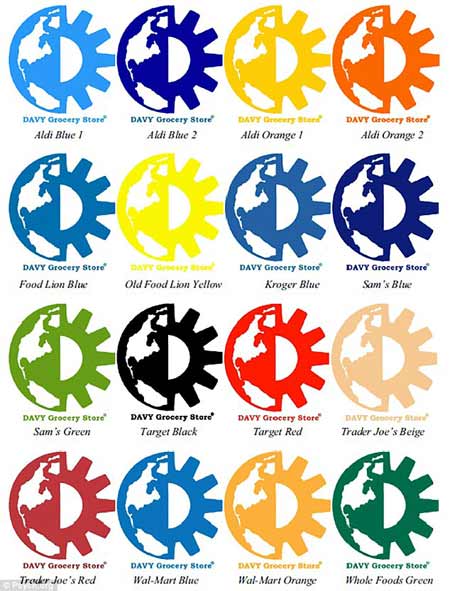当前位置: Language Tips> 双语新闻
Having a red logo makes firms seem less green
When shoppers enter a store, they form an opinion on the environment and products within the first 90 seconds, and more than half of their opinion is based on the color scheme.
走进一家店铺,消费者会在90秒内对环境和产品有一个大致印象,而这种印象一半以上是基于该产品的颜色主题。
A new study looked at how colors influence or biases the way consumers make ethical judgments, specifically if they view a company as environmentally friendly.
一项新的调查研究颜色如何影响消费者的道德判断,尤其是他们是否认为该品牌环保友好。

Results indicated consumers considered companies with blue logos to be more eco-friendly, compared to those with red logos.
调查结果表明,相比红色的商标,消费者觉得蓝色的商标更加生态友好。
University of Oregon and University of Cincinnati gave shoppers a fictitious logo with a color of a known brand.
俄勒冈大学和辛辛那提大学的研究者给消费者一些已知品牌颜色的虚构商标。
‘What we're finding is that color biases the way consumers make ethical judgments,’ Aparna said Sundar, a professor of marketing in the University of Oregon Lundquist College of Business.
俄勒冈大学朗德科斯特商学院营销学教授阿帕那·桑达说:“我们发现颜色影响了消费者的判断力”。
‘Of course green is one of those colors, but blue is also one of those colors that consumers associate with eco-friendliness.’
“在消费者认为环保友好的颜色中,当然绿色是其中之一,另外蓝色也是一个。”
It only took one unfamiliar logo for researchers to discover shoppers consider retailers using Walmart’s blue or Sam’s green in their logos to be more eco-friendly than those using Trader Joe’s red.
研究者只需一个消费者不熟悉的商标,便能发现顾客觉得沃尔玛使用的蓝色或山姆的绿色标志要比乔之店的红色更加环保友好。

‘Interestingly, blue is 'greener' than green in terms of conveying an impression of eco-friendliness, despite the frequent use of the word green to convey that idea,’ said co-author James Kellaris of the University of Cincinnati's marketing department.
共同作者辛辛那提大学营销部詹姆士·凯拉瑞斯说:“有趣的是,在生态友好印象上,蓝色比绿色更‘绿色’,尽管我们总是用绿色来传达环保的概念。”
Once researchers established a set of eco-friendly colors, they also identified colors perceived to be environmentally unfriendly, such as Target's red.
研究者确定了一系列生态友好颜色,也列出那些对环境不友好的颜色,如乔治店红。

Sundar and Kellaris then developed additional studies to test whether the colors impacted perceptions of the retailer's environmental friendliness.
桑达和凯拉瑞斯随后研究了颜色是否影响零售商的环境友好性。
Participants were asked if they felts DAVY Grocery Store acted ethically in various morally ambiguous scenarios, such as spraying water on produce.
参与者被要求作答是否认为DAVY零售店有在道德上模棱两可的行为,如在产品上喷水。
The results indicated that seeing a more eco-friendly color in a logo influences consumer judgments, and ethically ambiguous business practices seemed more ethical.
结果表明,看起来更生态友好的颜色会影响消费者的判断,而那些道德上模棱两可的做法似乎也让消费者感觉更放心。
Follow-up studies found that shoppers were more critical of a retailer with an eco-friendly-colored logo when presented with a procedure that was definitely ethical or definitely unethical.
后续的研究发现,在看待一些道德或不道德的做法时,消费者对有环保颜色的商标的零售商更挑剔。
While individual differences still play a role in this observed effect of color, Sundar's research suggests that color used in a logo has far-reaching consequences on consumers' perceptions of retailers.
虽然在研究颜色的影响上,个体差异仍发挥着作用,但桑达的研究表明,商标中使用的颜色长久地影响着消费者对零售商的看法。
英文来源:每日邮报
译者:张卉
审校&编辑:丹妮
上一篇 : 华尔街免费发披萨鼓励储蓄
下一篇 : 虫虫玩具车:蟋蟀来当驾驶员
关注和订阅


电话:8610-84883645
传真:8610-84883500
Email: languagetips@chinadaily.com.cn